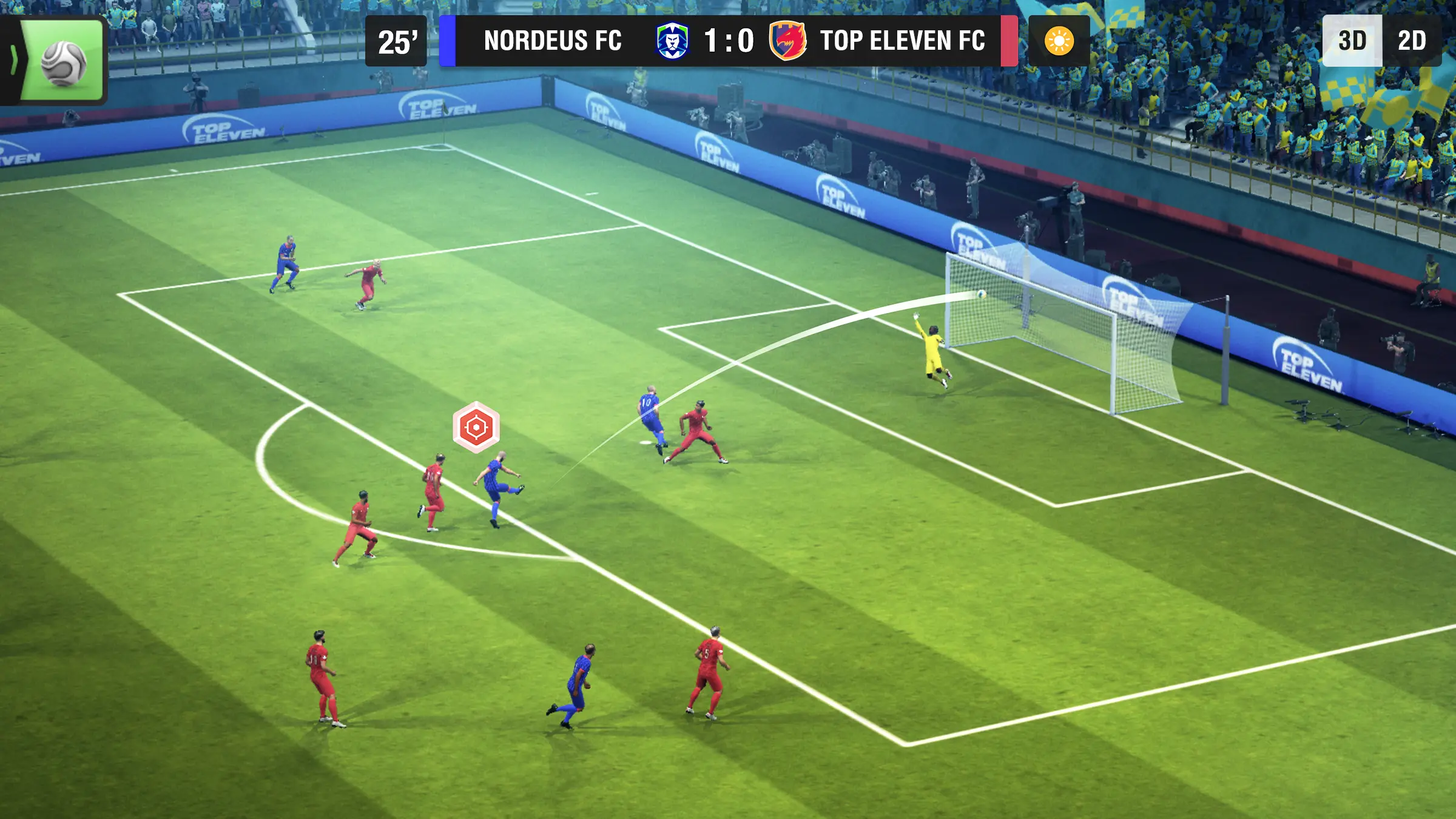Top Eleven Be a Soccer Manager Best Formations Guide

Top Eleven Be a Soccer Manager is a mobile soccer game that requires you to make many decisions about your team, including which formations to use. As we mentioned in our beginner’s guide, you don’t have direct control over your players, but you can switch between different formations both before and during the match. And if you make the right decisions, you will gain an advantage over your opponent: formations help you get past their defense or block their attacks.
Here, we will explain everything you need to know about formations and discuss some of the best ones. However, don’t forget that tactics are just as important as formations: if you like, you can also check out our guide on tactics.
What Are Top Eleven Be a Soccer Manager Formations?
A formation is the name given to the positioning of players in a soccer team on the field. Depending on the strategy you want to use, you place players in specific positions: these positions allow them to defend or attack, support each other, and respond correctly to the opponent’s movements.
Formations have names like 4-4-2. The numbers in a formation indicate how the players are positioned on the field. In a 4-4-2 formation, there are four players near the goalkeeper, four players in midfield, and two players in the opponent’s half. This formation was used for both defense and attack in the 2000s.

Formations in Top Eleven Be a Soccer Manager work in the same way. If you are using BlueStacks, you can drag and drop your players’ name badges to place them in your desired positions on the field and create your own formation. You can access the formation screen from the Squad menu or from the menu of the same name while a match is in progress.
Basic Formations
There are three basic formations, which are as follows:
- Defensive (4-3-2-1): This is a defense-oriented formation, and you should choose it if you want to focus on protection rather than scoring goals.
- Neutral (4-4-2): This is a formation that can be used for both attack and defense. You can use it at the beginning of the game, but it will become insufficient as you progress.
- Attacking (3-1-3-1-2): This is an attack-oriented formation, and you should choose it if you want to create scoring opportunities rather than protection.

These three formations can carry you smoothly through the mid-game phase as long as you pay attention to training, transfers, and tactics, but after that, you will need to switch to advanced formations.
Advanced Formations – Best Options
First of all, let’s clarify that there is no such thing as the “best Top Eleven Be a Soccer Manager formation.” No formation is perfect, and you cannot simply choose one and continue using it. During a match, you will need to switch between different formations depending on how the game progresses. So, even though we will share some examples of the best advanced formations below, remember that you cannot settle for just one.
Defensive Formations
- 5-3-2: This is one of the best defense-oriented formations you can use if you want to stay in defense and avoid goals. Place the defenders (3) in the center to prevent the ball from crossing into your half of the field. Place two strikers in the opponent’s half, and have the remaining players stay on your side of the field.
- 5-4-1: This is also a defensive-oriented formation, but it requires placing four defenders in the center. You will have only one player for attacking. It significantly reduces the likelihood of conceding goals, but the likelihood of scoring goals also drops to nearly zero. If avoiding goals is your top priority, you can use this formation.
- 4-5-1: This is a variation of the 5-4-1, focusing on placing even more defenders in the center. However, since you will have more players in the center, the player you assign for attack will have a slightly higher chance of scoring.

Attack formations
- 3-5-2: Assign the 3 players at the back to defense. The 5 players in the middle can change positions to assist them when needed, but their focus should be on the 2 players upfront—they should work to create goal-scoring opportunities for them.
- 4-2-4: This is a highly aggressive formation because it drops control of the center but allows you to place 4 attackers in the opponent’s half. You need to trust the 4 players you leave behind for defense. You can consider using it if you absolutely need to score a goal.
- 4-3-3: This is a slightly less risky version of the 4-2-4 formation. You leave one extra player in the center, giving you a slightly stronger defense, while the 3 players in the opponent’s half can still create scoring opportunities. It is an ideal attacking formation that can be used in most situations.

Team Building: Roles and Positions
To use these formations effectively, you need at least 22 players. Normally, you only need 11 players, but you will need to switch between them depending on their star levels, stats, and roles, so focus on getting a roster of 22 players first. In the table below, you can see how many players you need for each position/role.
| ROLE | NUMBER OF PLAYERS |
| DC | 5 or 6 |
| DMC | 2 |
| DL/DML | 2 |
| DR/DMR | 2 |
| ML/AML | 2 |
| MR/AMR | 2 |
| MC | 4 or 5 |
| AMC | 2 |
| ST | 3 or 4 |
| GK | 2 |
By switching between these formations at the right moment, you can gain a real opportunity to defeat your opponents. As always, we recommend playing Top Eleven Be a Soccer Manager on your PC with BlueStacks for a more enjoyable and seamless experience.
















